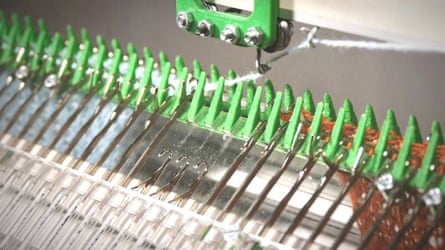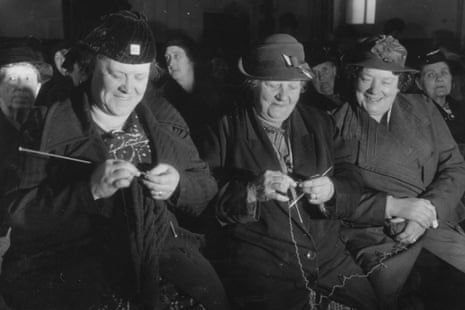When my son was born he had trouble breathing and went into intensive care. On visiting him, I found him in an incubator wearing a small purple cap. The hat was doing more than keeping his little bald head warm; the colour and the wool were a material link to the world of our everyday lives. It made him part of society even though he was surrounded by machines and tubes. The hat had been made by a legion of grannies who volunteered to make them for every baby in intensive care, and so it became a proxy for the local community, who in days of old would have crowded round the cot at home wishing for the baby to pull through.
A simple knitted hat did all this. It is this complex set of technical, social and cultural roles that make fabric one the best-loved materials human beings have ever invented. It is washable, fully repairable, and, although it is more than 8,000 years old, it is still one of our most innovative technologies.
Before modern times, most clothes were hand-made using locally spun yarns and home looms. It was the mass production of textiles that created cities such as Manchester and gave people access to a much wider range of fabrics, as well as reducing their cost. In the 19th century, new chemical dyes changed the look of clothes again, and the sewing machine changed how they were made.
But the biggest change came in the 20th century with the mass production of clothes that were designed to fit no one but to suit everyone. This business model has made clothes cheap enough for everyone to afford, if largely ill-fitting. Now there is a return to making individually tailored clothes but – and this may sound far-fetched – the new textile technologies promise to do far more than that.
3D knitting takes a digital design and turns it into a piece of clothing. In its simplest form, you download a pattern from the internet and size it digitally to fit the person it is intended for. You then feed the machine with the yarn and let it get on with its job. This is not the first time this type of technology has been developed: in the 1960s and 1970s many knitting machines entered the market from companies such as Toyota, Brother and Singer.
What is different this time is that the digital interface is much more sophisticated and 3D scanning, to obtain the individual size and shape of a person, is an established and cheap technology. The time seems right for bespoke clothing, tailored for individuals but made by machines, and UK companies such as Knyttan are already offering this product.

These 3D knitting machines are becoming an open technology, which promises to lead to further innovation. For instance, Openknit is an open-source machine that can be built from a kit and is part of a manufacturing ecosystem which includes a software interface and a digital hub to share digital garment designs. There are now many people worldwide developing the platform, all making different versions.
The significance of this is not just about cost; by building their own machines, users can modify them to knit potentially anything, such as high-strength fibres, light-emitting materials, sensors and electronics. Such technical textiles, as they are called, are on the increase in medicine, architecture, and sports.
Prosthetics, for instance, are made from carbon fibre composites. These start out as fibres of carbon, which are knitted together into fabrics that are impregnated with resin to give them rigidity. These rigid fabrics are light, strong and stiff, but essentially passive. Prosthetics makers are now working towards embedding electronics into the weave of the carbon fabric so that the material can sense itself and respond.
Textiles are also big in space. I once visited the laboratory of the team that designed the first clothing ever worn on another planet. They were the only ones in Nasa who didn’t burst into spontaneous applause when Neil Armstrong stepped on to the moon in 1969. Instead they held their breath: would the best fabrics they could come up with withstand the atmosphere of an alien world? No one knew.
They had done thousands of tests but finding a way to combine mobility, insulation, radiation and mechanical protection for a place no one had ever been was always going to involve some luck. They held their breath and hoped the moon’s abrasive dust didn’t hold any surprises that their lab had not anticipated. So it was that a fabric allowed man to walk on the moon. Further exploration of the solar system will need even more advanced textiles.
Despite all this engineering, what makes fabric really special, is that it doesn’t seem hi-tech at all. It speaks an emotional and sensual language that we all respond to and inspires love and even obsession. My son agrees: he has very strong opinions about the clothes he wears, and yes, his favourite colour is purple.

Comments (…)
Sign in or create your Guardian account to join the discussion